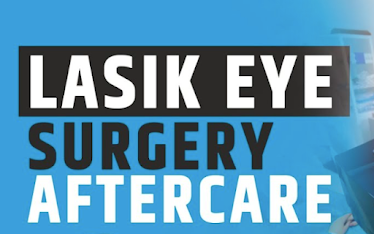What does LASIK Surgery do?
What is LASIK eye surgery?
LASIK eye surgery is a procedure that uses laser technology to address vision problems. It's designed to help people who experience difficulty seeing clearly due to refractive errors, which occur when the eyes cannot bend or refract light properly. These errors can result in blurry vision and affect the overall quality of life. However, LASIK has been proven effective in improving visual acuity and allowing individuals to enjoy clearer vision.
LASIK may be a suitable alternative for those who don't wish to rely on glasses or contact lenses for vision correction. After undergoing this surgery, there's a possibility that you may no longer require these aids altogether. However, they might still be needed for specific situations like nighttime driving or reading. Therefore, if you're considering LASIK, it's crucial to fully understand how does lasik procedure works and weigh its benefits and drawbacks before making an informed decision. It's important to note that only some are eligible for LASIK, as certain factors may disqualify individuals from being candidates. Additionally, it's worth mentioning that LASIK is typically not covered by insurance, so financial considerations should also be considered during decision-making.
What does LASIK eye surgery do?
Keratomileusis, which may sound like a complex and intimidating term, refers to the process of reshaping your cornea. Your cornea is an essential part of your eye, serving as the outermost layer responsible for bending light along with your lens before reaching your retina. The retina at the back of your eye is crucial in capturing light and sending electrical signals to your brain, enabling you to perceive what you are seeing.
Imagine your eye as a well-coordinated assembly line, with each component vital in producing a clear image. In this analogy, the cornea can be likened to the first step in the manufacturing process. An error or irregularity in this initial stage can disrupt the entire production and adversely affect the outcome. Similarly, light must pass through the cornea when it enters your eye. Any issues with the shape of your cornea can impede the proper path of light toward your retina, leading to blurry or distorted vision.
What conditions does LASIK treat?
LASIK, short for Laser-Assisted In Situ Keratomileusis, is a surgical procedure that has proven
highly effective in treating various vision conditions. One of the primary conditions that LASIK can address is nearsightedness, also known as myopia. If you're nearsighted, objects up close appear clear, but those at a distance may seem fuzzy or blurred. By reshaping the cornea, LASIK helps to correct this refractive error and allows individuals to see distant objects more clearly.
On the other hand, LASIK can also treat farsightedness, scientifically referred to as hyperopia. This condition causes difficulties in seeing nearby objects clearly while maintaining relatively good vision for things far away. By utilizing advanced laser technology, LASIK can reshape the cornea to improve your ability to focus on objects up close, thus enhancing your overall visual acuity.
Another common condition that LASIK can effectively treat is astigmatism. Unlike myopia and hyperopia, which affect how light enters the eye, astigmatism occurs due to an irregularly shaped cornea. This leads to distorted and blurry vision when viewing objects at any distance. Fortunately, LASIK can reshape the cornea and rectify its irregular shape, resulting in clearer and sharper vision.
As we age, our eyes undergo natural changes, including a decrease in the flexibility of the lens. This condition is called presbyopia or age-related hyperopia. With presbyopia, it becomes increasingly challenging to see objects up close. Although LASIK cannot directly address presbyopia by targeting the cornea, there is a technique called monovision or blended vision that can be employed alongside LASIK treatment. Monovision involves correcting one eye for distance vision and the other for near vision. By adopting this approach, LASIK can significantly enhance close-up vision and facilitate tasks such as reading.
In conclusion, LASIK is a highly versatile and effective procedure for treating various vision conditions. LASIK can improve your visual acuity if you're struggling with nearsightedness, farsightedness, astigmatism, or presbyopia. However, it's essential to consult an experienced eye care professional to determine if LASIK is right for you based on your specific circumstances and overall eye health.
Does LASIK permanently fix your eyesight?
LASIK, a popular surgical procedure for correcting vision problems, can permanently improve your eyesight. By reshaping the cornea, LASIK can enhance your vision to a level that is considered normal or near-normal. It is an effective solution for individuals exhausted from relying on spectacles or contact lenses to see clearly.
However, it's important to note that our eyes naturally change as we age. This means that even after undergoing LASIK, there is still a possibility that your vision may change in the years following the surgery. Don't be alarmed; this is just a normal part of the aging process and affects everyone to some extent.
One common issue that tends to arise around the age of 40 is presbyopia, which refers to the slow loss of the ability to focus on close objects. At some point, you will likely need reading glasses to assist with tasks that require close-up vision, such as reading books or working on a computer. While LASIK can significantly improve your distance vision, it doesn't necessarily prevent presbyopia from occurring.
In conclusion, while LASIK can provide long-term benefits by improving your eyesight, it's important to understand that it doesn't guarantee perfect vision for the rest of your life. Our eyes change over time, so it's not uncommon to need additional visual aids as we age. Nevertheless, LASIK remains highly effective and popular for those looking to reduce their reliance on corrective eyewear.
How long does LASIK take?
I am happy to inform you that LASIK usually takes up to 30 minutes to complete! That's right, in just half an hour or less, you can experience life-changing results. During this relatively short period, you can expect to spend only a fraction of it looking at a light - specifically, less than 30 seconds.
While 30 minutes may seem like a significant amount of time, especially regarding medical procedures, it's important to remember that LASIK is a highly precise and delicate operation. The surgeon will use state-of-the-art laser technology to reshape your cornea, improving its focusing power and correcting any refractive errors causing your vision issues. This process requires meticulous attention to detail and utmost care, ensuring optimal outcomes for each patient.




Comments
Post a Comment